The three markets in Tawang are closed on three different days—Old Market on Tuesday, Nehru Market on Wednesday, and New Market on Thursday. Most eateries remain open all throughout the week—especially those serving breakfast. Most of these breakfast joints either serve puri or paratha for breakfast and are geared towards the working class. Aesthetically, they might not be the best of places, but I found that they served the freshest food. I had some puri and tea at the Old Market and headed south towards Urgeling. I wanted to visit Manjushree Vidhyapith and deliver a box of chocolates for the kids on behalf of Partho and me. It’s not marked on Google maps. The only information I had was that it was in or near Urgeling village. The good part is that almost everyone in Tawang knew of the school.
The shortest way from Old Market is by foot, through the narrow and steep routes that pass through forests and between houses. Locals use them over the longer and more cumbersome motorable roads.
Urgeling Monastery
Urgeling is about 5 kms from Old Market. There is a board at the entrance of the village from where I could catch a glimpse of the monastery. As usual, the motorable road to the monastery is way longer than walking down the foot-ways on the slopes.
The name of the village and the monastery comes from its founder—Ugyen Zangpo. Urgeling is a corruption of Ugyenling that must have happened during transliteration from Tibetan. Built around 1487, the monastery is famous for being the birthplace of the 6th Dalai Lama—Tsangyang Gyatso—who was born three centuries later in 1683 to a direct decedent of Ugyen Zangpo.
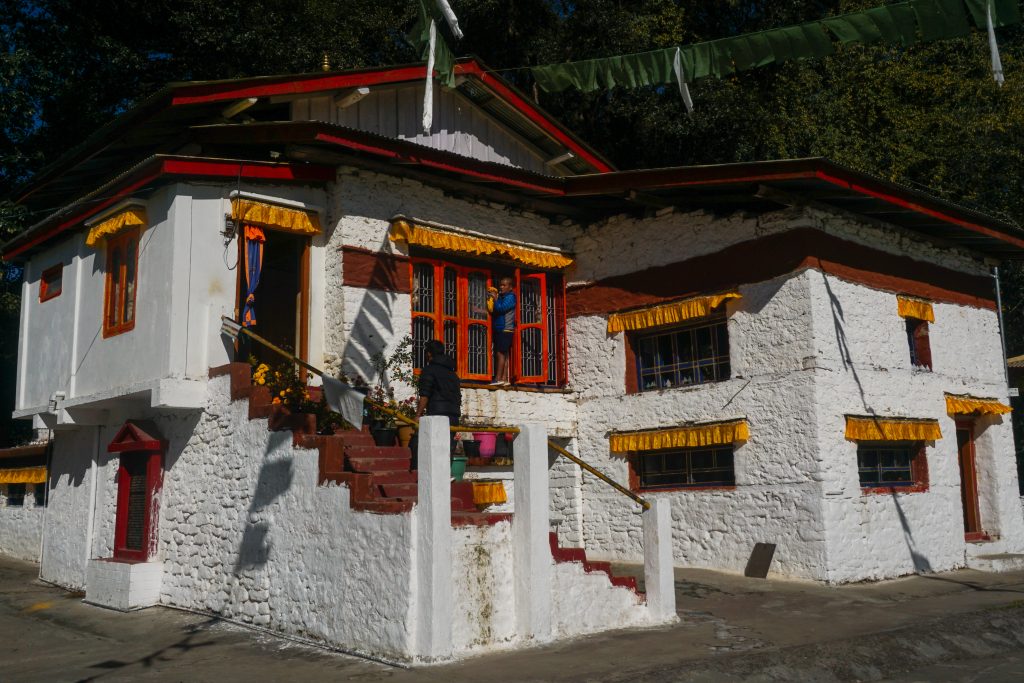
The prayer hall was one of the most peaceful places I had sat on during the entire trip. I cannot pin-point what it was but the solitude, the clean wooden floors, the warm sunlight and the cold breeze coming in through the windows definitely contributed to that feeling.
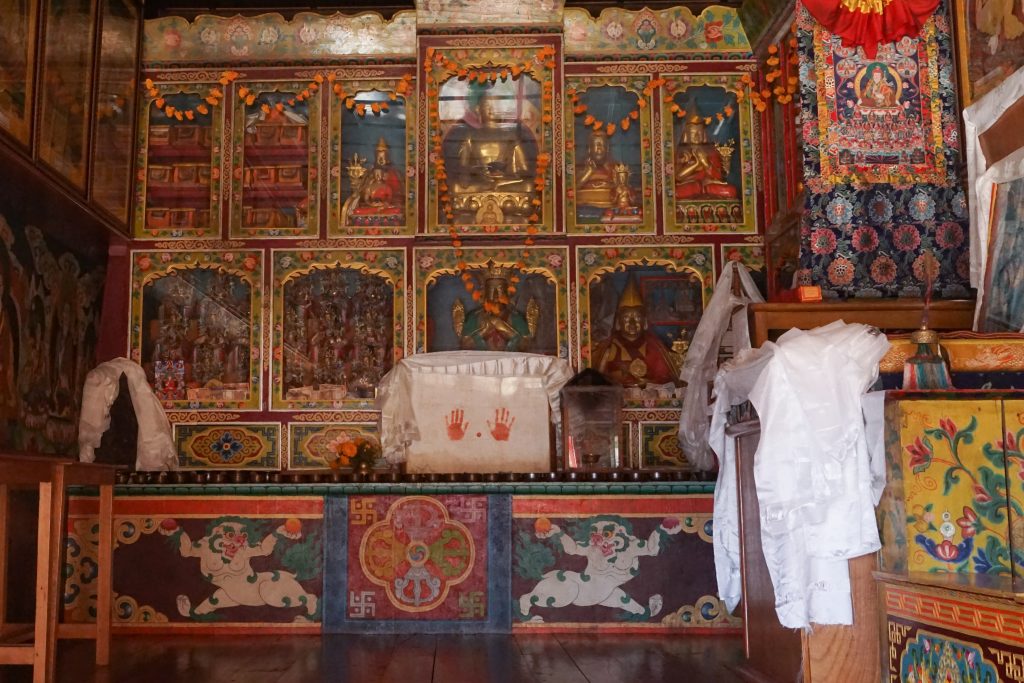
I stirred up a conversation with Lama Chimpa who was cleaning the windowpanes of the prayer hall. At my time of visit there were three lamas stationed at Urgeling. Lamas from Tawang Monastery are sent there for two or three years for learning, performing rituals and maintaining the monastery. Lama Chimpa had been there for over two-and-a-half years and would leave for Tawang Monastery in a couple of months. Someone else would take his place.

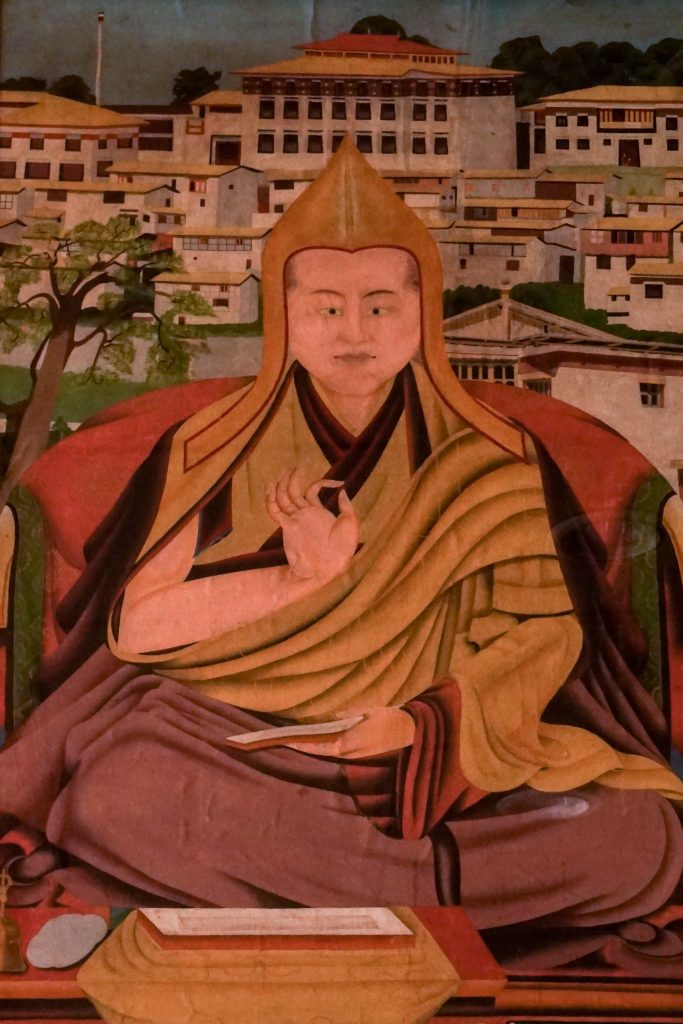
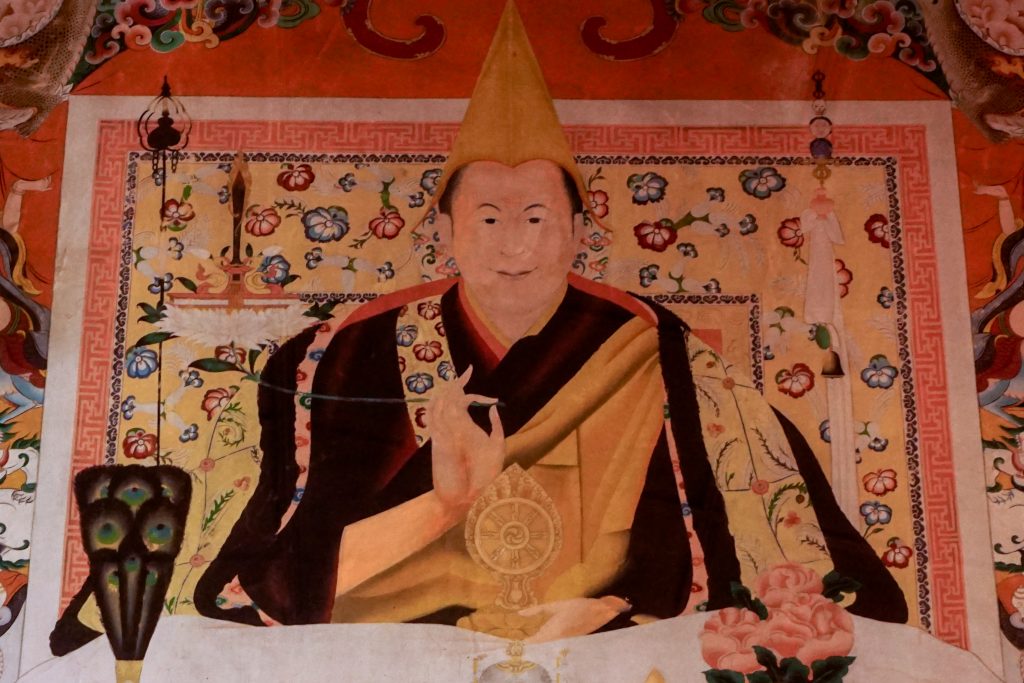
Manjushree Vidyapith
Lama Chimpa showed me the building of Manjushree that was visible through the forest behind Urgeling Monastery. It wasn’t that far but there wasn’t any set trail. There was also a valley in between. Lama Chimpa asked me to instead hike to the main road and follow it until I reached the school.
Since the school is not marked on Google Maps, here are the coordinates: 27°35’03.1″N 91°52’41.0″E
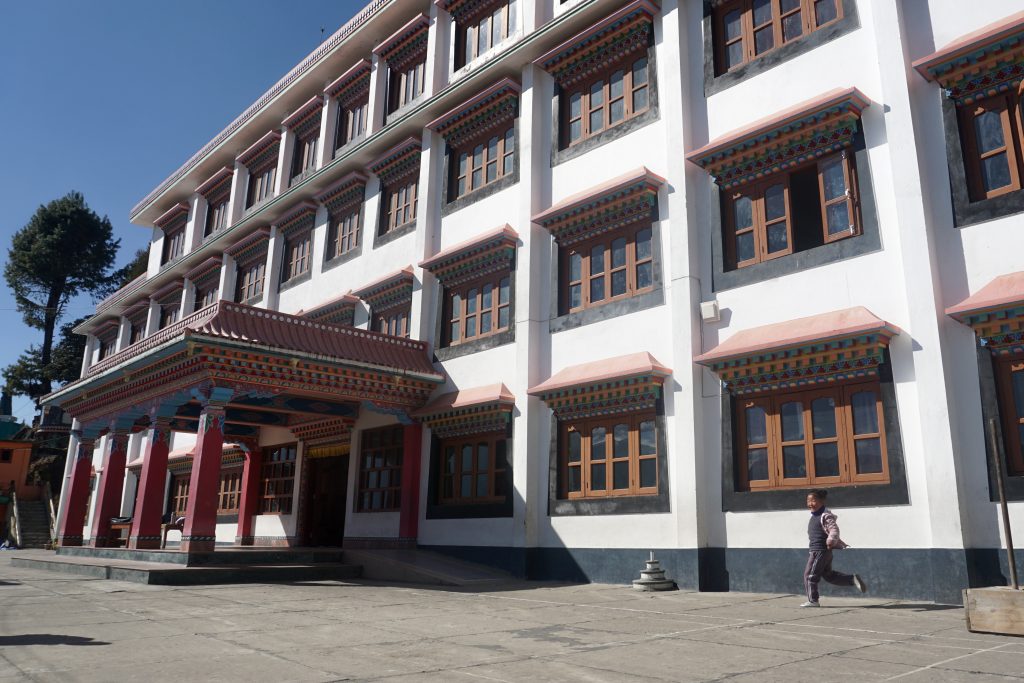
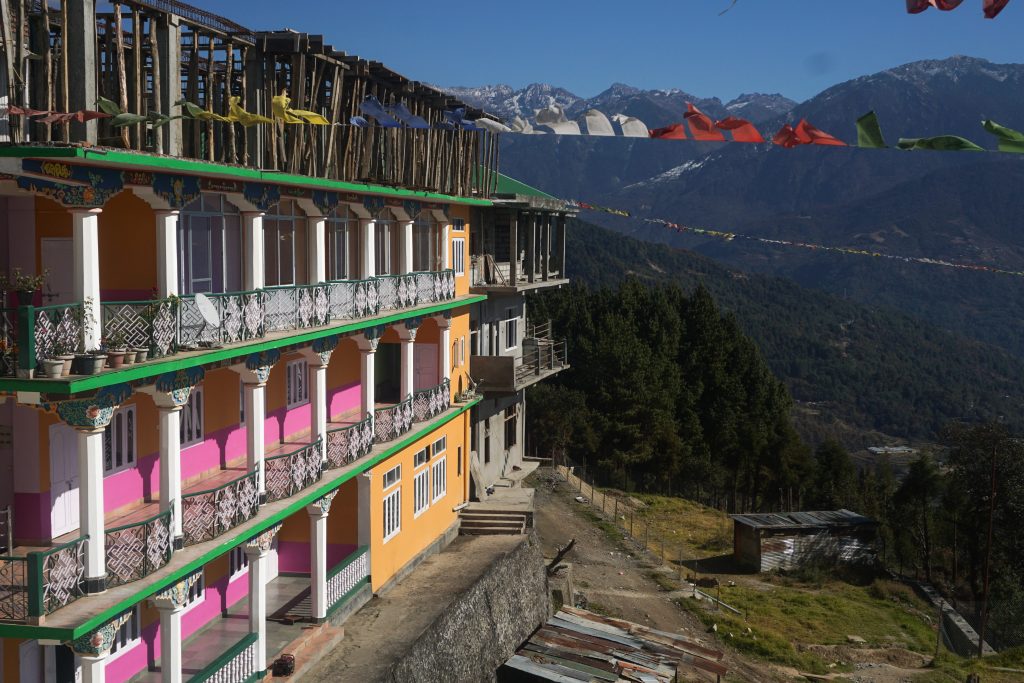
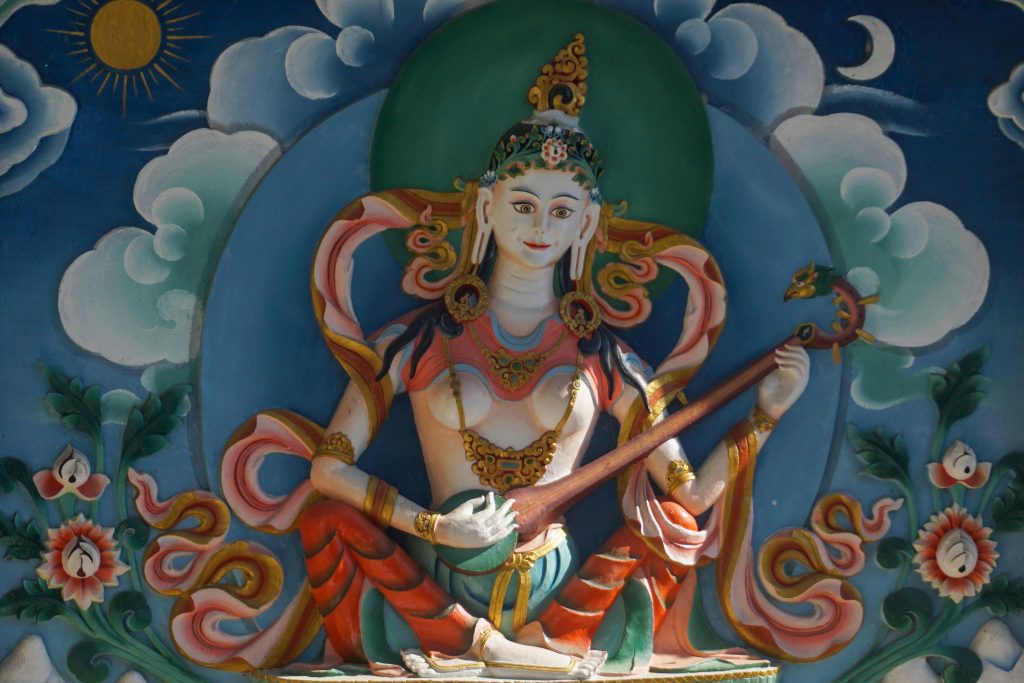
Manjushree is run by Lama Thupten Phuntsok. It is a school and an orphanage that he had set up. He has come a long way from the humble beginnings of 1998 when he had established Manjushree with 18 kids from the region. For his social work, he was awarded the prestigious Padma Shree in 2007. For more information, there is an informative article by Jim Luce oh the background and current work of Lama Thupten Phuntsok.
My visit was not just about carrying some chocolates and passing on Partho’s regards, who couldn’t visit the place owing to some personal constraints in the past and being stuck in Germany due to the ongoing pandemic at present. I was personally intrigued by the work that has been done there and wanted to know more about the school and what kind of help could someone like me offer.
Lama Thupten is a well-read and highly aware individual. Over a generous cup of tea we discussed about the state of the country, its progress as well as the needs of the local children. He highlighted the aspect of corruption in politicians and self-centred mindset among the high-ranked officials—the latter often attribute their success to their own hard work but forget the contributions that their family and the society has made for them. He lamented about the fact that central education policies don’t get executed that well at the ground level. A lot of teaching and examination is still based on rote learning. In order to alleviate this problem, he has instructed his teachers to focus on three days of classroom and two days of outdoor learning. It’s still sot enough as this practical learning stops once the students go to government schools when they graduate to 9th standard as Manjushree is only equipped till 8th.
One of the issues with children that Lama Thupten pointed out is that the kids in the hills think that getting a government job is enough—more specifically a low-rung job that they would not work for but get through the recommendations of an influential person. It’s either that or they would end up doing manual labour at construction sites. In my trip, I have also encountered a number of youngsters who weren’t interested in doing anything as long as they had a shelter above their head and something to eat and drink. One of the ways that people like us with better exposure to the world can help them with is by counselling them, by showing them the various kinds of opportunities that exists outside their immediate surroundings. Kids in 8th, 9th, and 10th standard need this the most. Later over a call, Partho agreed as he had encountered similar mindset and problems with village kids he had been teaching for the past couple of years.
I wasn’t able to meet the orphans. I really wanted to meet them to get a first-hand feel of their aspirations and the problems that Lama Thupten talked about. Due to a directive by the government, the students couldn’t stay in the orphanage (technically a boarding) during the pandemic. They were sent to their nearest relatives. Those in 9th and higher classes had gone to the schools that had been enrolled in—the government allowed higher classes to be held in schools post unlock 5.0.
I did meet the headmaster—Amar Gurung—and the teachers along with the their children. They were the only ones in the school. I took a number of photos of them. A couple of the kids were interested in my camera—it was fun to watch them pose for a photo and make strange noises as if the noises would be captured in the still photograph.
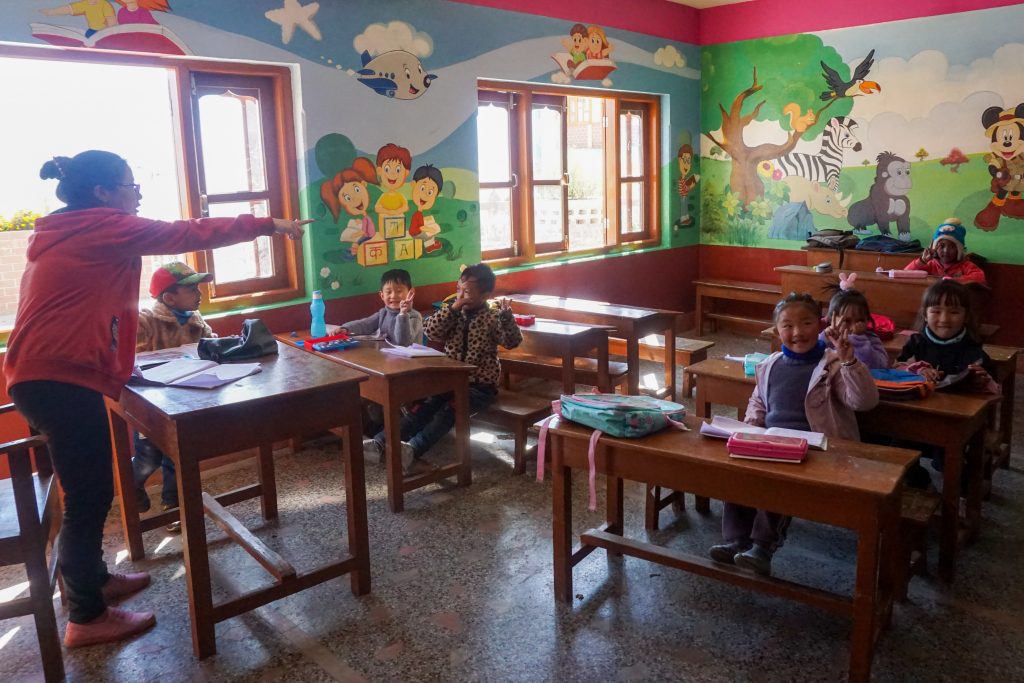
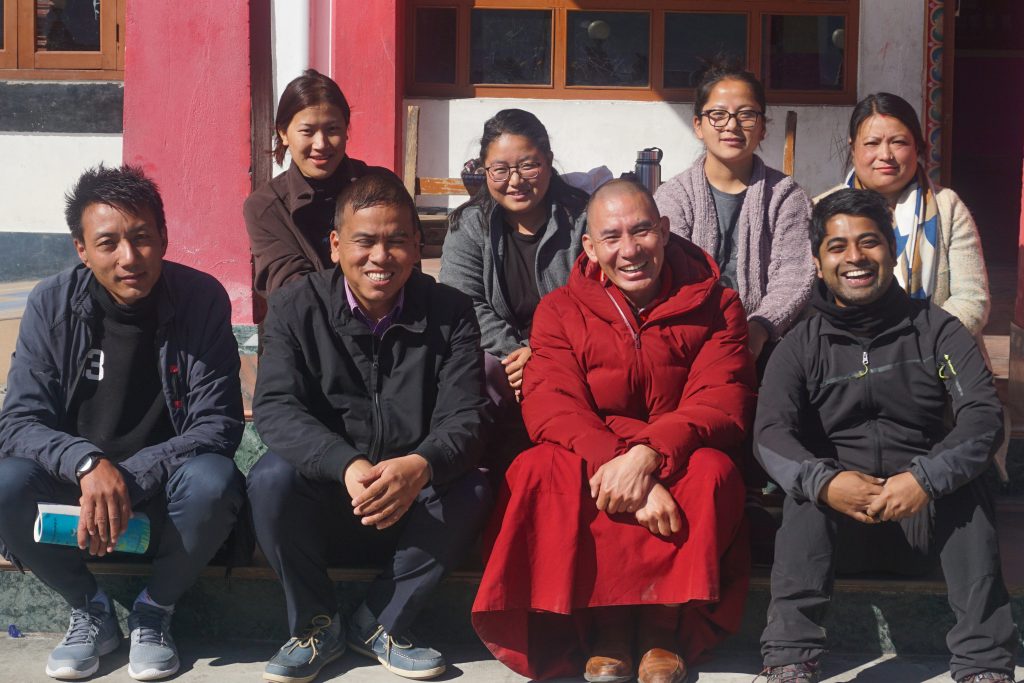
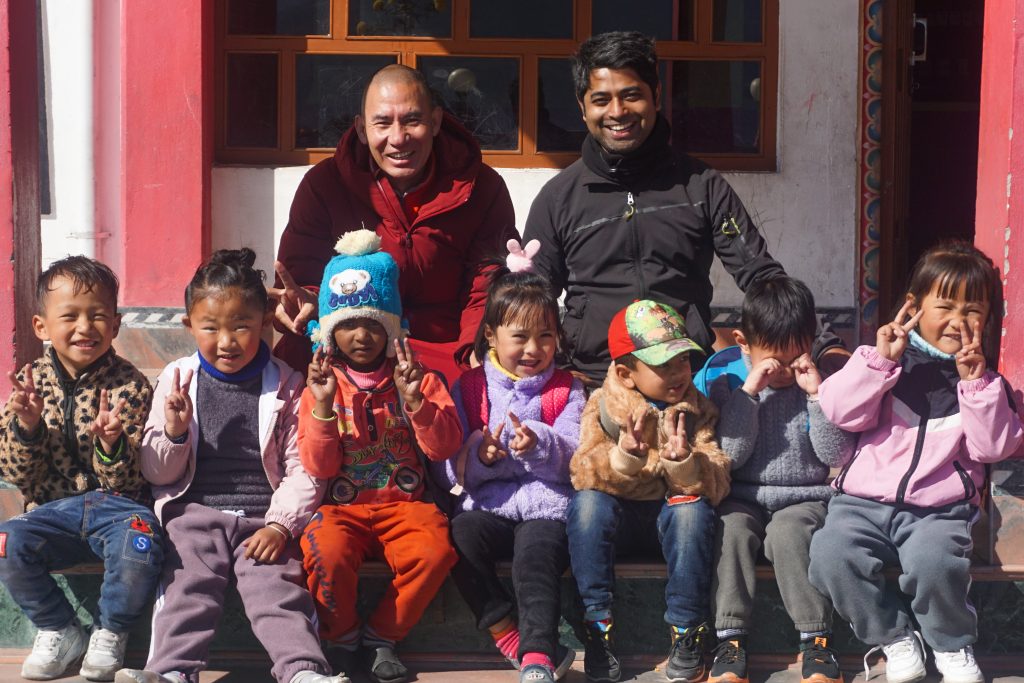
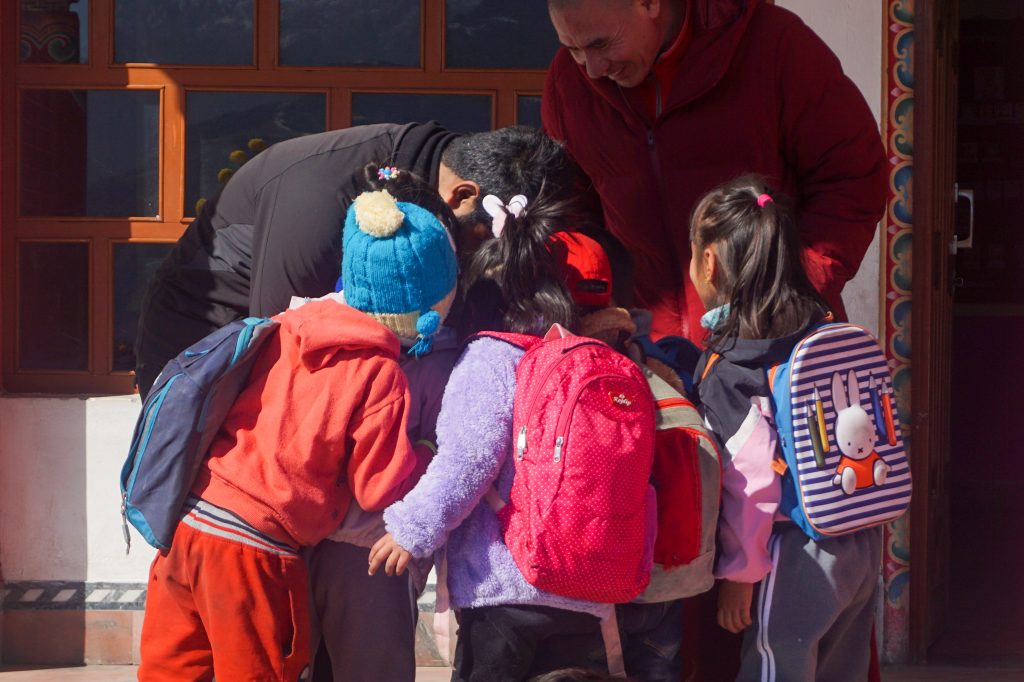
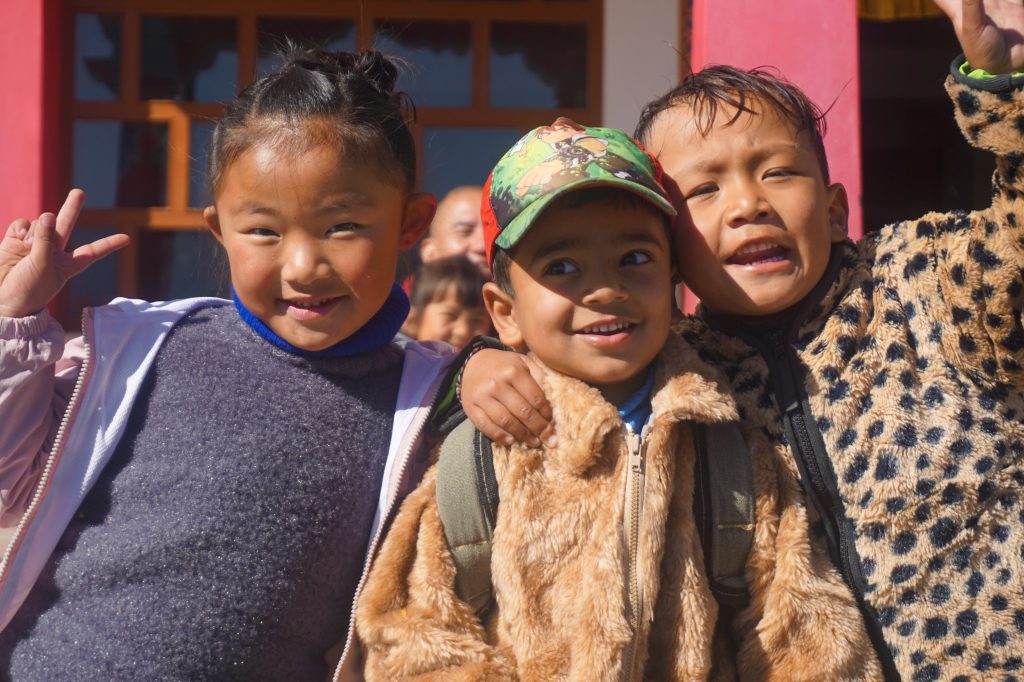
After a couple of hours, I bid farewell to Lama Thupten and the teachers. He asked his driver to drop me off.
It was not needed for me to go that far to understand what Lama Thupten said. The kids who worked in the hotel I was in came from poor families in villages near Tezpur and Tawang. They did not know much, nor did their parents know any better. The owner of the hotel had promised one of the kids from Assam that he would send him to school—a promise that remained unfulfilled due to schools remaining closed during pandemic. Akash—the manager—didn’t even complete his schooling.
